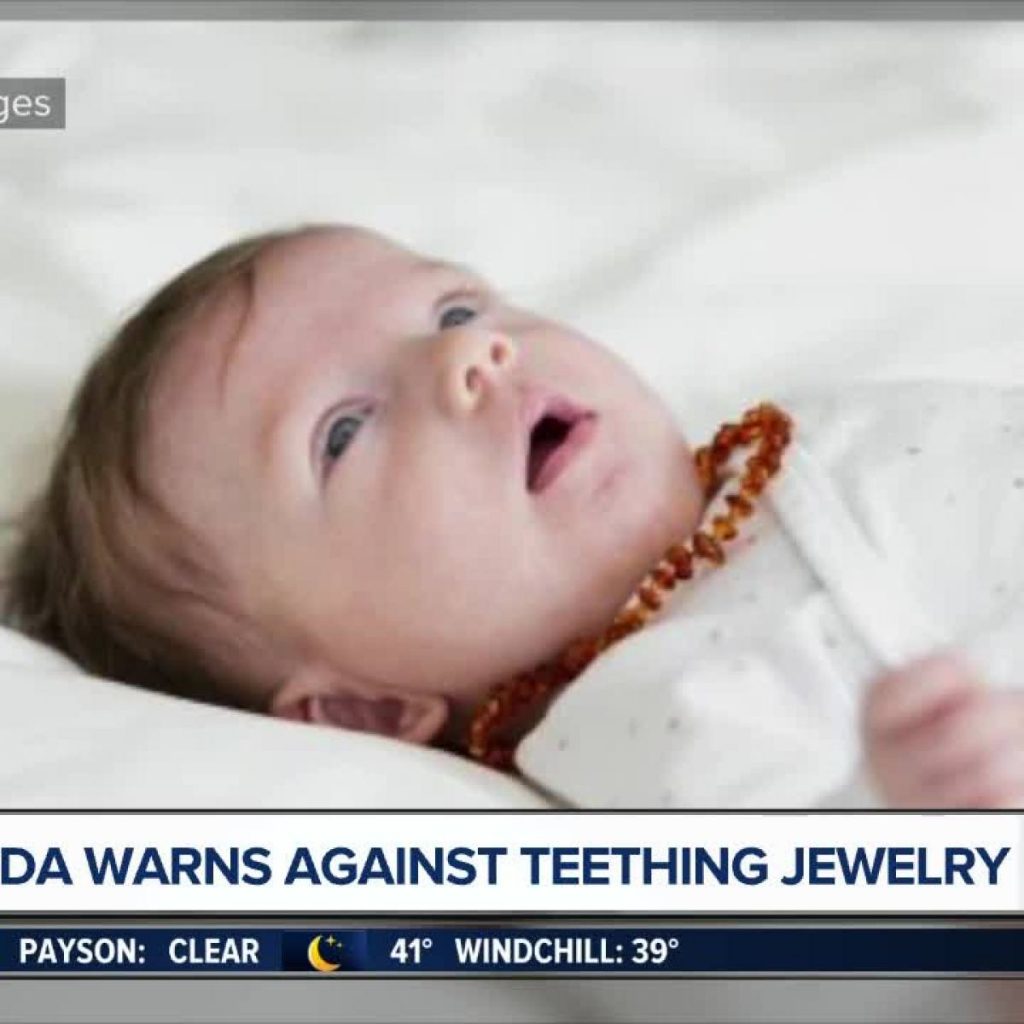The FDA has issued a stern warning against the use of teething necklaces, bracelets, and other jewelry used to relieve pain symptoms for babies.
This warning was issued after reports of a 7-month old child who was taken to the hospital after choking on the beads of a wooden bracelet. There were also reports of an 18-month-old who was strangled to death by a teething necklace.
“We know that teething necklaces and jewelry products have become increasingly popular among parents and caregivers who want to provide relief for children’s teething pain and sensory stimulation for children with special needs. We’re concerned about the risks we’ve observed with these products and want parents to be aware that teething jewelry puts children, including those with special needs, at risk of serious injury and death,” says FDA Commissioner Scott Gottlieb.
The FDA provided has provided the following recommendations to parents and caregivers:
- Do not use necklaces, bracelets, or any other jewelry marketed for relieving teething pain. The use of these products can lead to serious injuries including strangulation or choking.
- Be aware that the use of jewelry marketed for relieving teething pain or provide sensory stimulation to people with special needs can lead to serious injuries including strangulation or choking.
- Review the American Academy of Pediatrics’ recommendations for treating teething pain.
- Talk to your doctor about alternative ways you can reduce teething pain such as:
- gently rubbing or massaging the gums with a clean finger
- giving the teething child a teething ring made of firm rubber
- Make sure the teething ring is not frozen. If the object is too hard, it can hurt the child’s gums. Parents and caregivers should supervise the child during use.
- Avoid teething creams and benzocaine gels, sprays, ointments, solutions, and lozengesfor mouth and gum pain in infants and children younger than 2 years. Benzocaine and other local anesthetics can cause methemoglobinemia, a serious condition in which the amount of oxygen carried through the blood is reduced. This condition is life-threatening and can result in death.
